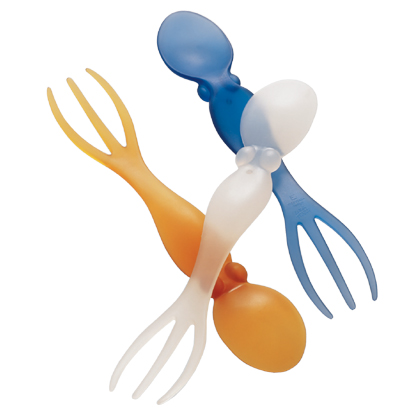Oh, it's a particularly beautiful piece of Italian fashion kitchenware!
Whether it's the knife, fork, spoon or plate in the tableware, they are all extensions of the hand. For example, the plate is an enlargement and extension of the entire palm; while the fork represents the fingers on the entire hand. Due to the progress of civilization, many of these symbolic utensils have gradually been simplified and merged. For example, in China, there are only chopsticks and spoons left in the end. Sometimes there are small plates as well. In the West, however, until now, a full set of tableware is still laid out during meals, such as large plates, small plates, shallow dishes, deep dishes, forks for eating salad, forks for cutting meat, spoons for drinking soup, spoons for eating desserts, etc. This shows that in terms of food culture, the West not only started later, but also progressed very slowly.
Before the 13th century, Europeans ate with their fingers. There were certain rules when eating with fingers: Romans distinguished identity by the number of fingers used. Commoners used all five fingers, while well-bred nobles only used three fingers, and the ring finger and little finger could not touch the food. This dining rule continued until the 16th century and was still followed by Europeans.
Forks: The forks used for eating first appeared in Tuscany, Italy in the 11th century, with only two prongs. At the time, the clergy did not think highly of forks. They believed that humans should only use their hands to touch the food given by God. The wealthy Tuscans who created the cutlery were tempted by Satan, which was considered a desecration of the divine. Italian historical records show that a Venetian woman died within a few days after using a fork to eat. She probably died from infection of the plague, but the clergy said that she was punished by heaven, warning everyone not to use forks to eat.
